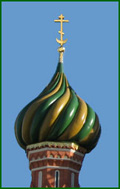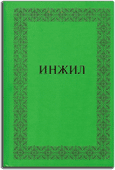The chulym tatars
Чулымские татары
Self-designation. The people known as the Chulym Tatars (or Turks) have used as self-designations the names of the tribes (e.g. Kьдrьk -- Russ. кюерик, Kezik -- Russ. кецик, Melez -- Russ. мелец). They have no single definitive name.
The earliest information about the Chulym Tatars dates from Russian colonists of the late 16th century. It is suspected that there may be earlier data in some Chinese or Indian sources.
Population. There is scant data about the number of the Chulym Tatars. According to information from 1902, a great many of them have become russified, with only about 500 considered to be non-russified. In the census of 1959, they are estimated at 4,500. Other data is a little more specific:
____________Teguldet district____________Tyukhtet district________total
1957__________________876_______________________?___________?
1970____________________?_____________________232___________?
1979__________________569_____________________192_________761
1986__________________505_____________________134_________639
Living in settlements mixed with other peoples has quickened the transition to the Russian language. Between 1971 and 1984, 55 % of marriages were mixed. The result is that 67.6 % of the children come from mixed families of which only 18 % regard themselves as Chulym Tatars. Over 82 % of Chulym Tatars have relatives of other nationalities. Around 33.2 % cannot speak their mother tongue, among these, unfortunately are all children below the age of 15.
Habitat. The Chulym Tatars live in the basin of the River Chulym, a tributary of the Ob. Administratively, they belong to the Teguldet district of the Tomsk region and the Tyukhtet district of the Krasnoyarsk region, in the Russian Federation. The Chulym Tatars are located between the Shors and the Baraba Tatars.
The language of the Chulym Tatars or the Chulym language belongs to the Turkish-Tatar languages, East-Hun branch, Uighur-Oguz group, subgroup of Khakass. The Chulym language differs from its nearest related languages (Khakass, Shor, Kamas) in various phonetical and grammatical features. Two dialects can be distinguished: Lower-Chulym and Middle-Chulym or Melets, which, in their turn, divide into vernaculars. Of the two the more widespread is the Lower-Chulym dialect. The differences in the dialects are quite distinct, existing not only in pronunciation but also in vocabulary and grammar. The differences are such that speakers of the different dialects would have difficulty in understanding each other.
The Chulym language is very expressive of a nomadic people''s lifestyle in a taiga region. An abundant native vocabulary exists to describe the flora and fauna, hunting, fishing and family relations, while for everything connected with a settled life, there are relatively few words -- these areas are bolstered with a mass of loanwords. Words related to life as it was during the Soviet period are predominantly of Russian origin.
Compared against its related languages, Chulym is closer to the Khakass and the Altai dialects than to the languages of the Baraba Tatars.
Anthropologically the Chulym Tatars belong to the Mongoloid Central-Asia racial type. They are generally short (men average 160 cm), with a swarthy skin, and dark eyes and hair. Some tribes are fairer and slimmer, closer to the Uralic race.
History. The core part of the Chulym Tatars are descended from the Khants and/or Kets. Probably influenced from the 6th century on by the Altai and Uighur tribes they became turkicized. Part of the later Chulyms (Kьдrьk) descended from Teleuts and another part (Kezik) from the Tobolsk Tatars. More Kirghiz of the Yenisey, Teleuts and Tatars came from the Tobolsk region in the 17th century, after the Russians conquered the Siberian Khanate.
Chulym tradition includes stories of times when they lived on the Ishim and the Tobol, under the rule of the Khan Kuchum and his son Kyzlakh.
***
Writing. The Chulym Tartars have never had a written language of their own. Earlier they used a language common with other Tatars. Since schooling in the Tatar language was stopped in the 1960s, the Chulym Tatars have used Russian or the Khakass written language.
Research. The earliest linguistic examples by P. S. Pallas (Linguarum totius Orbis vocabularia comparativa, 1787--1789). Materials from D. G. Messerschmidt''s diary date back to an earlier period (1719), but were published in 1823 in J. Klaproth''s book Asia polyglotta. Under the pseudonym "D" a great amount of vocabulary and idioms were published in 1858 (Язык чулымских инородцев). In the 1860s, V. Radlov collected linguistic materials about the Chulym and published some examples of text (Образцы народной литературы тюркских племен) and in 1882, part of a dictionary (Опыт словаря тюркских наречий). V. Radlov''s materials were also used by N. Katanov in his work (Опыт исследования урянхайского языка, 1903).
In 1928 P. Ivanov stayed on the middle reaches of the Chulym and established that the Tatar language of that region was still spoken in only two villages. Since 1946, the Chulym Tatars have been the subject of research by A. Dulzon.
REFERENCES
1. А. П. Дульсон. Чулымские татары и их язык. -- Ученые записки Томского гос. пед. института. Т. IХ, Томск 1952
2. А. П. Дульсон, Чулымско-тюркский язык. -- Языки народов СССР. Т. II, Москва 1966
3. В. П. Кривоногов, Некоторые аспекты этнических и этнокультурных процессов среди чулымских тюрков. -- Этнические и социально-культурные процессы у народов СССР. Кн. 1, Омск 1990
4. Происхождение аборигенов Сибири и их языков. Материалы межвузовской конференции 11--13 мая 1969 г., Томск 1969
5. Татары Западной Сибири. -- Народы Сибири, Москва--Ленинград 1956




